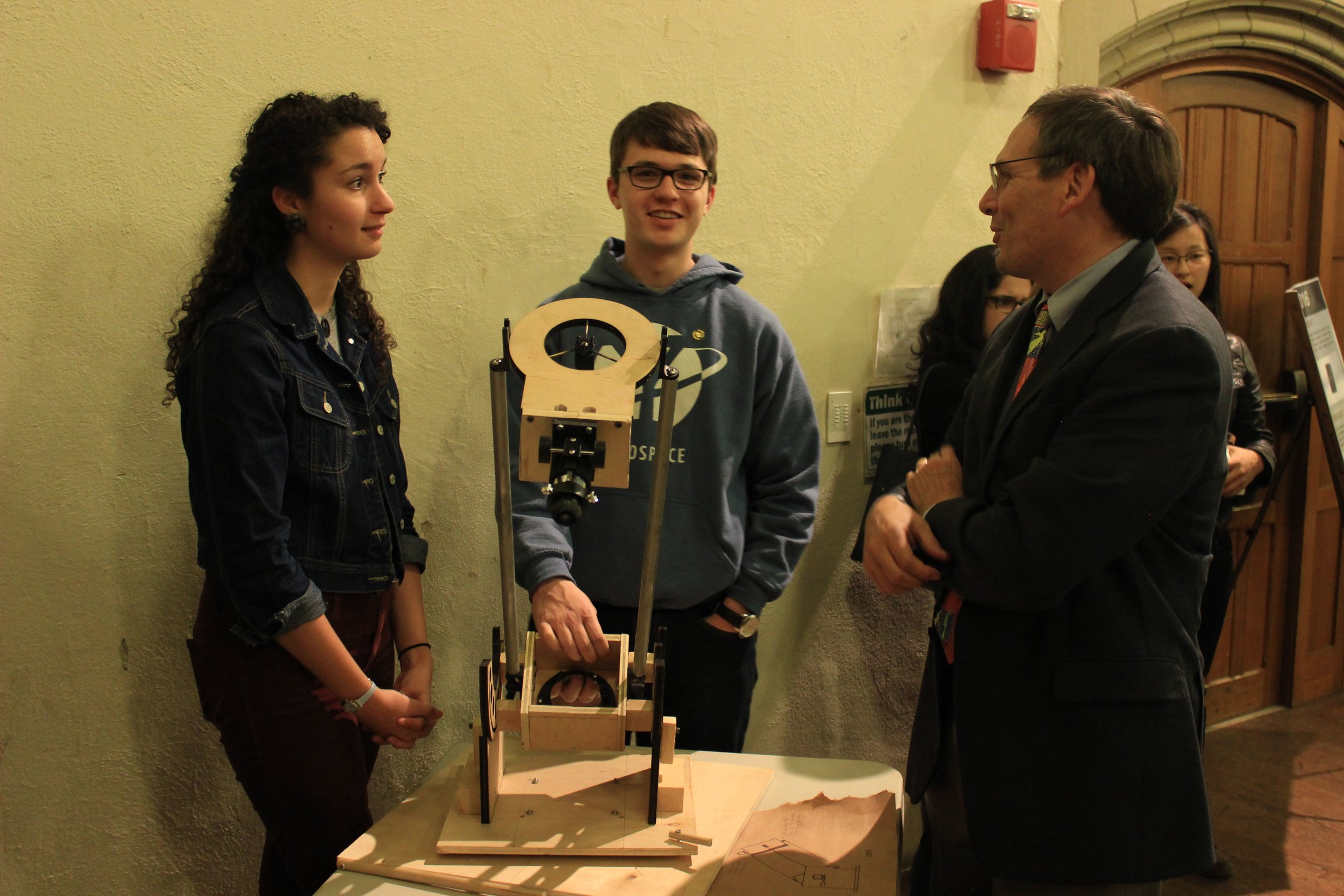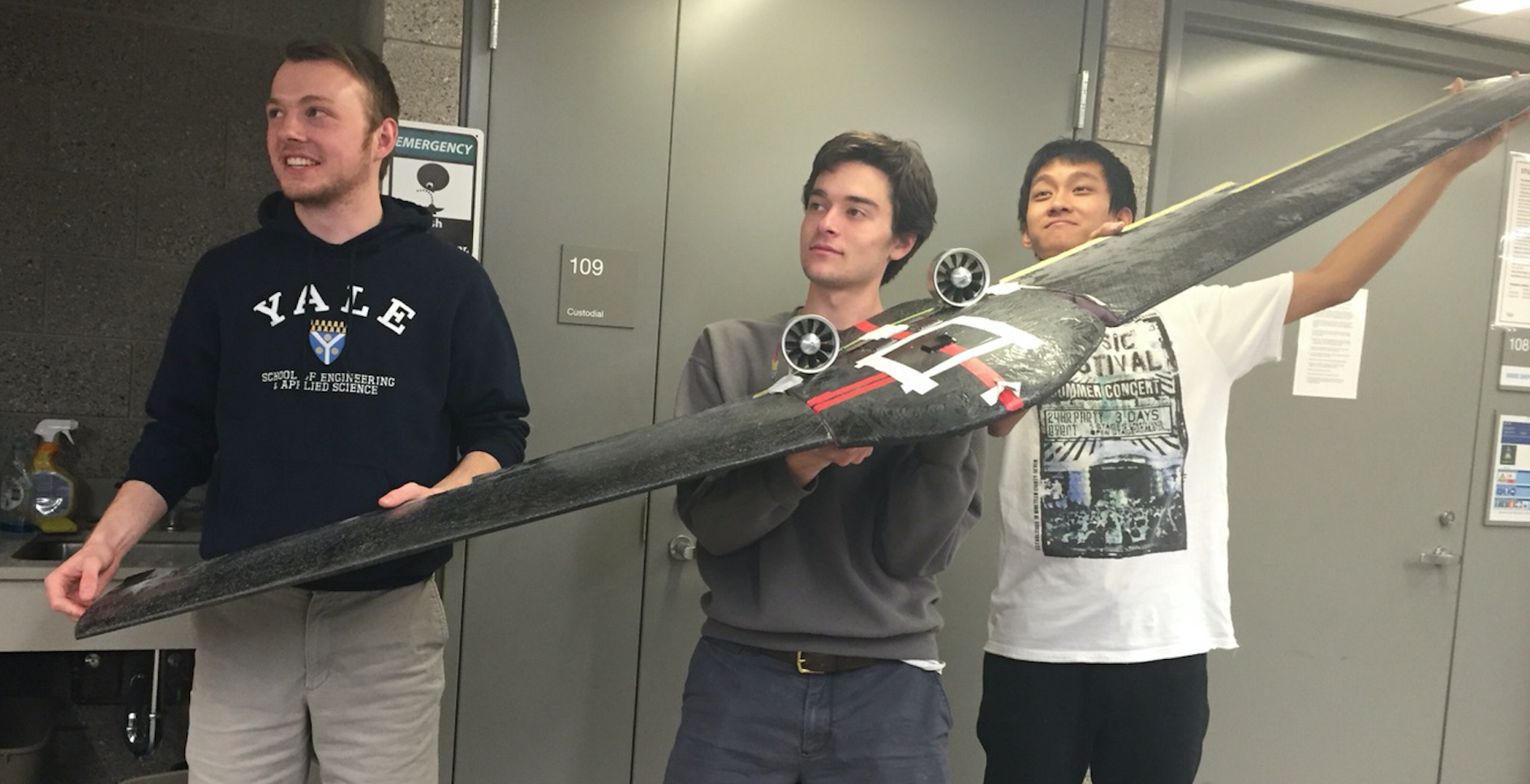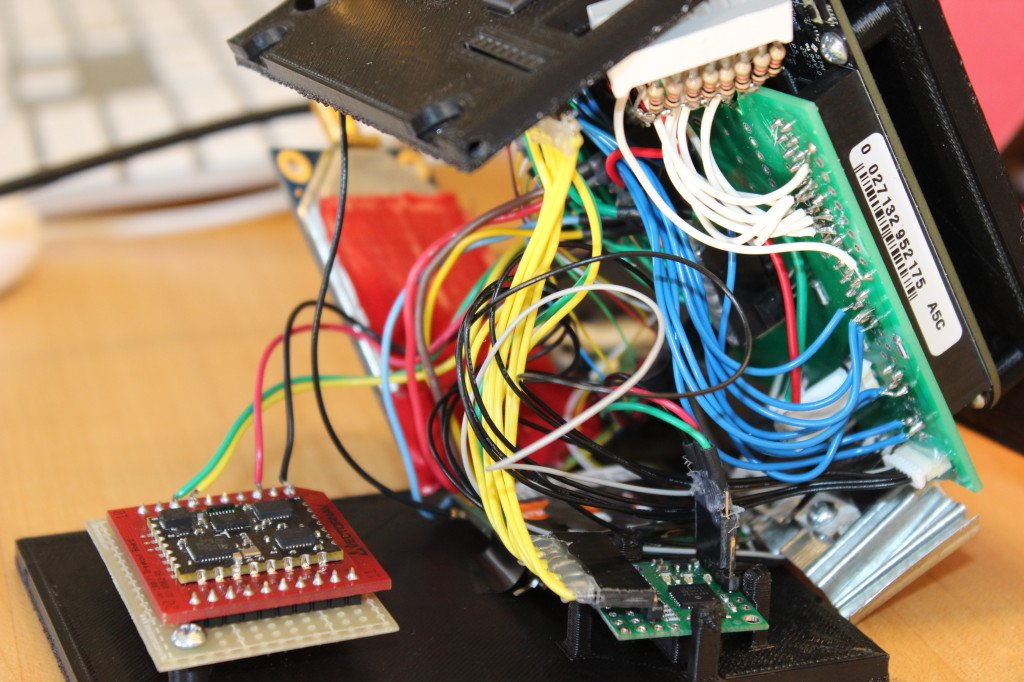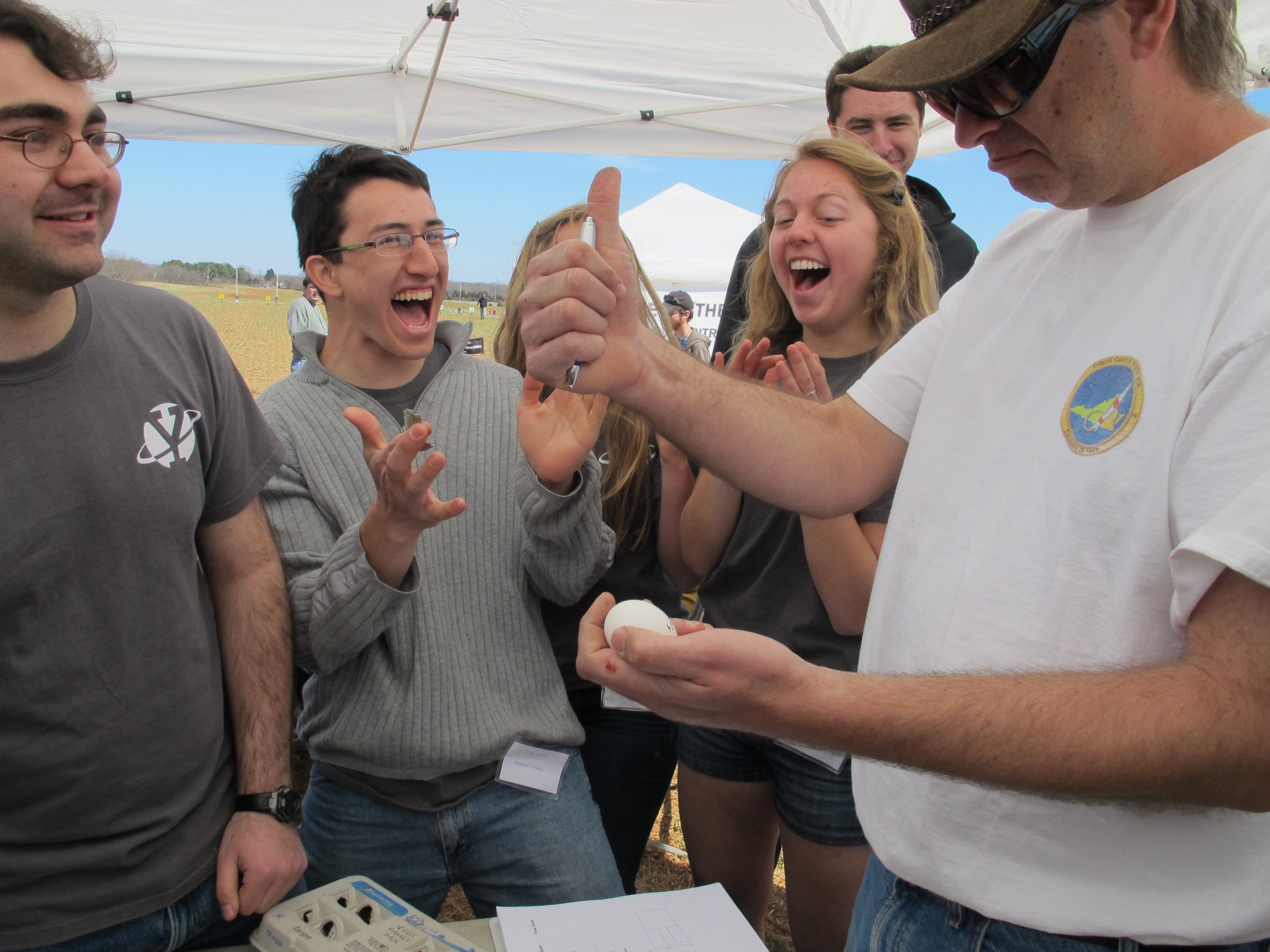SELECTED PROJECTS

Optical Telescope
The Optical Telescope was built from scratch by 12 members with little to no engineering experience. A prototype mirror of 3.5” and a final telescope mirror of 12” were constructed, and the first telescope was presented to K-12 students in New Haven.

High Performance UAV
The High-Performance UAV project concentrated on designing, constructing, and flying a fixed-wing uncrewed aerial vehicle (UAV) and ground station capable of receiving a live video and telemetry stream. High performance metrics included time aloft, maximum airspeed, distance flown, and adherence to the designed flight plan. These efforts aligned with the aerospace industry today, creating more sustainable, efficient, and environmentally sound air transportation methods.

CubeSat
The CubeSat team is designing and building a CubeSat that will carry a cosmic ray detector to measure high-energy electrons originating from the sun and outside the galaxy. The team will collect information on the density and count of these particles and make inferences to the energy of the particles. Commended at White House Astronomy Night 2015 ahead of its first meeting, the corner-stone project has inspired generations of Yale students to learn the values of long-term engineering in the march towards a 2024 NASA Handoff.
2010-2011
On April 26, 2011, YUAA successfully launched and retrieved the YUAA Horizon, a second-generation high-altitude vehicle built by the YUAA. Horizon remains one of the most advanced amateur balloons to date, featuring two independent tracking systems, a failsafe aborting mechanism, a camera, and sophisticated software applications for real-time tracking on the ground.
Project Babelon, named as a cross between the Tower of Babel and Balloons, was the first project of the Yale Undergraduate Aerospace Association (YUAA), was then known as the Yale Air & Space Group (ASG).
2011-2012
SkyView improved on Explorer by optimizing high-altitude flight, tracking, and image capture. Launched in Spring 2012, an unfortunate gust of wind caused SkyView to land 4.3 miles off the coast of Connecticut, causing high-resolution images and the vehicle to be non-recoverable. Its estimated altitude was 11,200 meters.
Explorer was a high-altitude aircraft designed for atmospheric exploration and research. It featured an unparalleled array of tools and capabilities compared to former YUAA balloons and launched in January 2012.
2012-2013
The Quadcopter team built a four-rotor helicopter, or quadcopter, using a variety of sensors to ensure stable flight. The craft carried a high-definition camera on board to capture footage from angles otherwise impossible to reach.
The Command Center was designed to fulfill the electronics needs of any future craft developed by the organization. The main goal was to create a modular package capable of redundant communications methods, computational processing, location tracking, motor control, and sensor data logging.
On April 6, 2013, YUAA won the Astro-Egg Lander event of the Battle of the Rockets Competition in Culpeper, Virginia. The team designed and built a rocket and lander capable of launching an egg up 1,500 feet and recovering it safely without a parachute. The team’s rocket, the YSS Eli Whitney, flew six times, including both test and competition launches.
During the Spring of 2013, YUAA team members to launch a rocket to an altitude of 1,700 ft in preparation for the Battle of the Rockets Competition in Culpeper, Virginia. Our team used the Contrail G100 hybrid rocket motor, fulfilling the requirement for participants to use a commercially available rocket motor
2013-2014
The Rocket Competition team built Chronos, a rocket designed to fly 10,000 feet while carrying an atomic clock that attempted to measure relativistic effects during the 2014 Intercollegiate Rocket Engineering Competition (IREC) hosted by ESRA. The team was awarded 2nd in the SDL Payload Competition (out of 36 teams) and additional recognition from the judges for the experimental subject.
The Rocket Launched UAV project aimed to fire a 15ft rocket (Omega) with an autonomous Unmanned Aerial Vehicle (UAV) in its payload. Successful flights of the UAV and the ascent of Omega were achieved.
The Lighter than Air UAV project was intended to provide new, less experienced YUAA members with the opportunity to design and build a competition-ready UAV (Unmanned Aerial Vehicle). Lighter than Air is an aerospace design competition sponsored by the American Society of Mechanical Engineers (ASME).
The Quadcopter team built a four-rotor helicopter, or quadcopter, using a variety of sensors to ensure stable flight. The craft carried a high-definition camera on board to capture footage from angles otherwise impossible to reach.
2014-2015
The Radio Astronomy team created a fully steerable radio satellite dish with signal-processing hardware and software. Along the way, project members were taught the basics of astronomy, signal processing, and data processing. To spread this knowledge, we held demonstrations of the dish functionality at high schools in and around the New Haven area. This project, along with CubeSat, was mentioned at the 2015 White House Astronomy Night.
The multi-stage rocket project focused on successfully launching and recovering a rocket two or more stages. It successfully launced to 9617 feet.
This team aimed to design and build an unmanned autonomous vehicle (UAV) capable of target recognition, payload drops, and flight via GPS-bounded coordinates.
The Rocket Competition team designed and constructed rockets and a payload to compete in two events at the Battle of the Rocket Competition. For the Target Altitude event, a rocket was built with the capability of reaching exactly 1,625 feet using a G motor. For the Planetary Rover event, the team constructed a rover and rocket system to launch more 1,000 feet on a K motor. The rover was contained within the 11-foot tall, 7.5-inch diameter rocket during its ascent and released with its own recovery system to land and perform a tasks on the ground. The competition was held on March 28th in Culpeper, Virginia.














